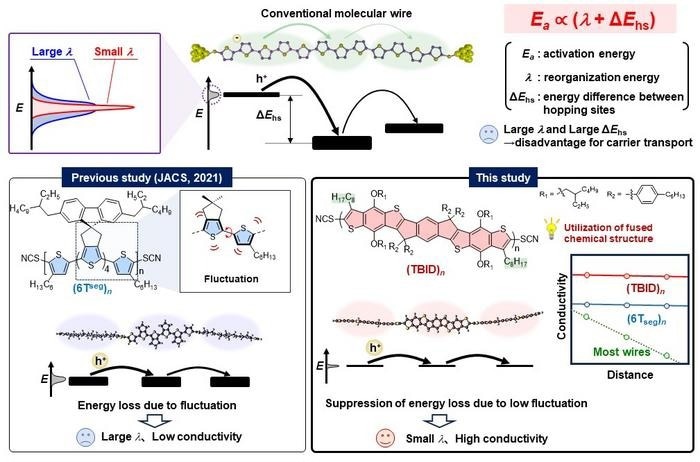Reviewed by Lexie CornerAug 21 2024
Researchers from SANKEN (The Institute of Scientific and Industrial Research) at Osaka University have recently developed nanometer-scale molecular wires with periodic twists. Their study was published in The Journal of the American Chemical Society.

Development of periodically twisted molecular wires. Image Credit: Osaka University
It is commonly assumed that electrical conductors are always made of metal, from high-voltage wires to tungsten filaments in incandescent lights. However, for decades, researchers have been developing advanced materials based on electrically conducting carbon-based oligomer chains. These materials include the organic light-emitting components used in some modern computers and smartphones.
According to quantum mechanics, electrons are not just fixed point particles; they can become "delocalized" across a space. This delocalization occurs in molecules with pi-conjugation, where a long stretch of alternating single and double bonds allows electrons to move freely. Conductive polymers function by allowing these delocalized electrons to hop between pi-conjugated regions, similar to a frog hopping between adjacent puddles.
However, variations in the energy levels of nearby regions can limit the efficiency of this process. To enhance electrical conductivity, it is crucial to fabricate oligomers and polymers with more consistent energy levels. This consistency is essential for the development of single-molecule wires and novel organic electronics.
In contrast to previous experiments that used a single, randomly rotating long chain, the oligomers in this study were composed of rigid fused sections separated by uniformly spaced twists. The researchers found that the conductance of these samples was higher than that of non-fused oligothiophenes, demonstrating improved electrical performance.
By carefully controlling the size of these pi-conjugated regions, high single-molecule conductance was achieved in these oligomers using rigid molecular structures.
Ryo Asakawa, Study Lead Author, Osaka University
By applying thin chemical films to flexible substrates, the researchers hope to create new organic electronic devices cheaper than those made with conventional silicon-based methods, which frequently require specialized clean rooms for lithography production.
We expect this research will lead to better single-molecule electronics and organic thin-film devices.
Yutaka Ie, Senior Author, Osaka University
Individual molecular wires might even be used as biocompatible sensors inside living cells.
Journal Reference:
Asakawa, R., et al. (2024) Periodically Twisted Molecular Wires Based on a Fused Unit for Efficient Intramolecular Hopping Transport. Journal of the American Chemical Society. doi.org/10.1021/jacs.4c07548.